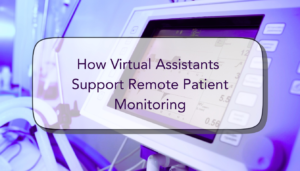Top Revenue Cycle Management Best Practices for 2025 Success
02 Oct 2025 By: Vlade Legaspi
Updated

As healthcare change fast, strong Revenue Cycle Management (RCM) is key. Payer rules, patient needs, and laws grow more complex. To stay stable, providers must follow smart methods. In 2025, success means using tech, data, and patient-focused steps.
This guide shares the top Revenue Cycle Management best practices for 2025. Use tools like automation and patient outreach to cut denials, speed cash flow, and boost efficiency.
Understanding the Current Revenue Cycle Landscape

Before using the top Revenue Cycle Management best practices, providers must grasp today’s biggest RCM challenges. A 2023 HFMA report showed 60% of providers face denials and delayed pay. These issues often come from complex payer rules, bad data, and slow workflows. These gaps drain revenue and push leaders to retrain staff and update their methods.
Shifts to value-based care and higher patient payments also reshape RCM. Patients now cover more costs, so clear communication is vital. Without change, providers face more debt and lower satisfaction. Better patient outreach, payment plans, and price clarity can boost trust and payment rates.
Tech plays a major part. EHRs, AI, and cloud RCM tools now handle billing, coding, and collection tasks. In 2024, over 70% of providers used automation, and more will join in 2025. AI improves accuracy and trims errors. With predictive tools, it helps providers fix gaps and grow stronger RCM results.
Best Practice #1: Leverage Advanced Automation and AI

Streamlining Claims Processing
Automation is now a must in RCM, not a choice. It cuts errors, speeds claim submission, and boosts accuracy. This is key to the top Revenue Cycle Management best practices.
AI tools scan claim data and flag issues before submission. This lowers denial risks. Machine learning spots patterns in denied claims and offers rule-based fixes.
An MGMA study in 2024 showed this approach can cut denials by 30%. NLP also helps by reading clinical notes, giving more context and raising approval chances.
Enhancing Eligibility Verification
Verifying insurance at the time of service is key to stopping rejected claims. It’s one of the top Revenue Cycle Management best practices in 2025.
AI tools check coverage, co-pays, and authorizations fast. Staff can then collect payments upfront, boosting cash flow and cutting debt.
These tools also send alerts on coverage changes. This keeps providers updated and helps build trust through clear, timely info.
Automating Patient Billing and Payment Plans
Patients now expect simple, clear billing. One of the top Revenue Cycle Management best practices is to meet this need with smart tech.
Automation sends custom bills, reminders, and payment plans by app or portal. This raises satisfaction and boosts collections.
AI chatbots help too. They answer billing questions fast, guide payments, and suggest options based on patient needs. This builds trust and speeds payments.
Best Practice #2: Prioritize Data Analytics and Reporting
Using Data to Identify Bottlenecks
Data analytics helps spot problems in the revenue cycle fast. It’s one of the top Revenue Cycle Management best practices every provider should use.
Tracking KPIs like AR days, denial rates, and clean claims shows where delays start. If coding errors cause denials, staff can get targeted training.
Watching payment trends helps fine-tune billing. Real-time insights also let providers act fast, stay flexible, and boost patient satisfaction.
Forecasting Revenue and Cash Flow
Advanced analytics help forecast revenue with more accuracy. It’s one of the top Revenue Cycle Management best practices for better planning and stability.
Predictive tools flag likely denials or late payments early. This protects cash flow through quick action and smart choices.
Using past data, providers can test different plans and see future results. This helps leaders decide on hiring, inventory, and spending with confidence.
Benchmarking Against Industry Standards
Comparing metrics to industry benchmarks is one of the top Revenue Cycle Management best practices. It shows where providers can improve and grow.
Hospitals average 45 AR days; clinics average 30. Spotting gaps helps target fixes and tech upgrades to boost results.
Benchmarking also drives teams to aim higher. It builds a mindset of growth, better care, and smarter use of resources.
Best Practice #3: Foster Patient-Centered Financial Communication

Improving Price Transparency
With rising patient costs, price clarity is key. It’s one of the top Revenue Cycle Management best practices for trust and better payment rates.
Clear estimates before care help patients plan and avoid billing shocks. This boosts satisfaction and sets clear expectations.
Tools like cost estimators give real-time prices based on coverage. Detailed cost breakdowns and helpful guides also raise understanding and build trust.
Offering Flexible Payment Options
Not all patients can pay in full right away. One of the top Revenue Cycle Management best practices is to offer flexible ways to pay and get help.
Payment plans, aid programs, and counseling boost collections and ease stress. Digital tools that take cards, ACH, or wallets make paying easier.
Reminders cut missed payments and build good habits. A finance team can guide patients, explain coverage, and create plans that fit their budget.
Engaging Patients Through Multiple Channels
Effective communication is one of the top Revenue Cycle Management best practices. Use calls, texts, emails, and app alerts to reach patients fast.
Personalized messages based on patient habits boost action and lower late payments. Data helps fine-tune timing and message style.
Collect feedback through surveys or groups to find gaps. Use insights to improve and build trust, leading to better results and stronger ties.
Best Practice #4: Strengthen Compliance and Staff Training
Keeping Up with Regulatory Changes
Rules and payer policies often change. One of the top Revenue Cycle Management best practices is to stay compliant to avoid denials and fines.
Build a team or hire experts to check billing, coding, and records. This cuts risk and builds a strong, accountable work culture.
Hold regular reviews and join industry events to stay sharp. Quick action on new rules helps your team adjust fast and stay ahead.
Continuous Staff Education
Well-trained staff are key to success. One of the top Revenue Cycle Management best practices is regular training on coding, rules, and tools.
Use sessions, forums, and certifications to boost skills. This helps staff fix denials fast and handle complex cases with ease.
Simulations give real practice. Advanced certifications grow team confidence and improve care, accuracy, and patient satisfaction.
Implementing Internal Audits
Routine audits are one of the top Revenue Cycle Management best practices. They catch billing and coding errors before claims go out.
Audits spot problems like wrong modifiers or missing notes. Fixes made early help cut denials and boost payments.
Share audit results with staff to support learning and ownership. Track trends to guide training and improve accuracy over time.
Best Practice #5: Optimize Denial Management Processes
Establishing a Dedicated Denial Management Team
Denials happen, but fast action matters. One of the top Revenue Cycle Management best practices is building a strong denial management team.
This team reviews reasons, files appeals, and prevents repeat issues. It should include billing, coding, and compliance experts.
Ongoing training and updates keep the team ready. Their work helps recover revenue and raise future claim approval rates.
Utilizing Root Cause Analysis
Knowing why claims get denied is key. One of the top Revenue Cycle Management best practices is using root cause analysis to stop repeat issues.
Sort denials by type, eligibility, coding, or auth gaps. Then fix the source with clear steps and training.
Audit denied claims often to spot trends. Involve clinical staff to build shared responsibility and improve accuracy across the team.
Leveraging Technology for Faster Resolution
Denial management software is one of the top Revenue Cycle Management best practices. It tracks denials, speeds appeals, and boosts cash flow.
When linked to EHR and billing systems, it creates a smooth workflow. This cuts delays and helps teams act fast.
AI tools spot denial trends and flag risky claims early. This saves time, boosts efficiency, and lets staff focus more on patient care.
Best Practice #6: Collaborate Across Departments
Breaking Down Silos
Teamwork drives RCM success. One of the top Revenue Cycle Management best practices is linking clinical, admin, and finance teams.
Clear clinical notes improve coding and billing. Open communication keeps data accurate and processes aligned.
Hold regular team meetings to share ideas and fix workflow gaps. This breaks down silos and boosts overall efficiency.
Engaging Physicians in the Revenue Cycle
Physicians help shape revenue success. One of the top Revenue Cycle Management best practices is involving them in documentation and compliance efforts.
Give feedback on gaps and offer training. This helps them see how notes impact billing and claim approval.
When doctors understand their role in revenue, they engage more. This boosts coding accuracy and lowers denials.
Integrating Technology Systems
Interoperability is one of the top Revenue Cycle Management best practices. Linking EHRs, billing, and patient tools cuts errors and manual work.
Shared systems allow real-time data and clear reports. This boosts decisions and smooths daily operations.
Analytics tools reveal trends and weak spots fast. Tech also improves patient care with timely updates and personal support.
Looking Ahead: Preparing for Future Revenue Cycle Trends

As 2025 nears, healthcare must stay flexible. One of the top Revenue Cycle Management best practices is adapting to new tech like telehealth and AI.
Telehealth boosts access and patient loyalty. But it brings new billing rules, so RCM teams must adjust to ensure fast, accurate payments.
Scalable tools, a focus on patients, and ongoing training drive success. Apps and portals help patients stay informed and improve collections.
Data insights reveal habits and needs. This lets providers tailor care and billing, building a stronger, future-ready revenue cycle.
Trending Now!
A recent AMA webinar shared eight key areas to help private practices improve Revenue Cycle Management. These include accurate patient registration, real-time insurance verification, and clear check-in/check-out workflows. Billing teams must link correct CPT and diagnosis codes, while claim submissions should meet payer-specific rules to avoid denials. Practices should track payer responses, fix rejected claims fast, and send timely, accurate patient bills. Regular reviews of payments and collections help spot issues early. These steps can boost efficiency, reduce denials, and improve cash flow for private practices.
Conclusion
Revenue Cycle Management is key to healthcare success. One of the top Revenue Cycle Management best practices is using tech, data, and teamwork together.
Strong RCM cuts denials, speeds payments, and keeps patients happy. It also helps teams stay
In today’s fast-changing healthcare world, strong revenue cycle practices are vital for success. By following the AMA’s proven steps, private practices can cut errors, speed payments, and improve patient satisfaction. To take your practice even further, Join HelpSquad Health, a trusted partner that helps streamline RCM, boost efficiency, and support your team every step of the way.


